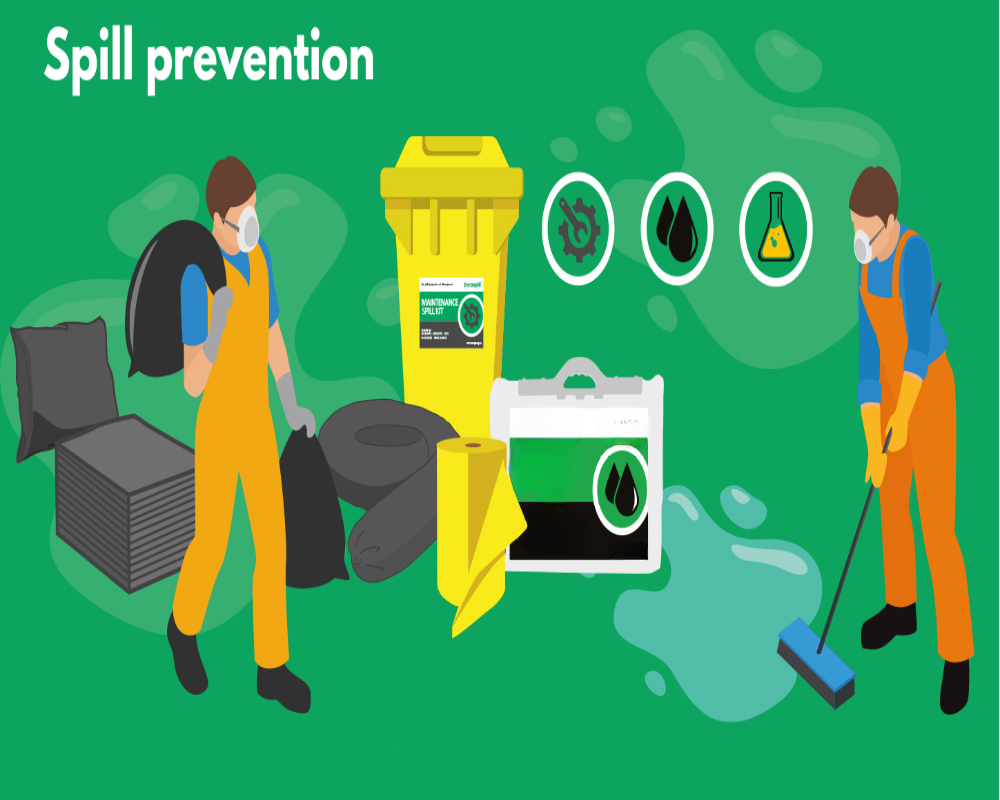Introduction
Spill prevention measures on commercial sites refer to the set of proactive strategies, systems, and operational procedures designed to prevent the accidental release of hazardous substances such as oils, fuels, chemicals, and other pollutants into the environment. These measures are critical components of environmental management plans and regulatory compliance frameworks, particularly for businesses that store, handle, or transfer potentially harmful materials. Effective spill prevention safeguards public health, protects natural resources, reduces liability exposure, and ensures continuity of business operations without costly environmental cleanups or legal penalties.
Purpose and Regulatory Context
The main objective of spill prevention is to avoid environmental contamination and the associated damage to soil, groundwater, surface water, and air quality. Regulatory agencies such as the U.S. Environmental Protection Agency (EPA) and comparable bodies in other countries require commercial sites to implement spill prevention protocols, particularly under laws like the Clean Water Act and the Resource Conservation and Recovery Act. These laws mandate the development and implementation of Spill Prevention, Control, and Countermeasure (SPCC) plans for facilities that store or manage certain quantities of hazardous substances.
In addition to federal or national requirements, local authorities often impose supplementary regulations that require commercial operations to follow best management practices (BMPs) tailored to specific land uses, industries, or environmental sensitivity zones.
Key Elements of Spill Prevention on Commercial Sites
Spill prevention encompasses a range of physical and procedural controls. These include infrastructure elements such as secondary containment systems, which are barriers or enclosures—like berms, drip pans, or double-walled tanks—designed to capture spills before they reach soil or drains. Storage areas must be clearly labeled, properly ventilated, and located away from sensitive environments such as stormwater inlets or public access points.
Proper equipment maintenance and handling protocols are equally important. Regular inspections of storage tanks, valves, hoses, and containers help identify leaks before they result in spills. Handling procedures must be standardized, with staff trained in proper techniques for transferring, mixing, or disposing of materials safely.
Spill prevention also includes employee training and emergency preparedness, ensuring that staff know how to prevent spills, recognize potential hazards, and respond effectively when an incident occurs. Training programs typically cover the use of spill kits, shutdown procedures, communication protocols, and containment strategies.
Documentation and Planning
Most commercial facilities dealing with hazardous materials are required to develop a formal spill prevention and response plan, often as part of a broader Environmental Management System (EMS). This plan outlines the types of materials present, identifies potential spill scenarios, describes preventive measures in place, and assigns responsibilities for inspection, maintenance, and response.
Documentation also includes inventory logs, maintenance schedules, inspection reports, and training records. Keeping accurate and updated records not only supports operational safety but also provides critical evidence of compliance during regulatory inspections or audits.
Integration with Site Design and Operations
Spill prevention measures must be integrated into the physical design of the commercial site. Drainage systems, for example, should be engineered to divert potential runoff away from critical areas or into containment basins. Site grading, floor surfacing, and the layout of equipment or storage zones should minimize the likelihood of spills spreading or reaching environmentally sensitive areas.
Operational practices such as limiting the quantity of hazardous substances stored on-site, using automatic shut-off valves, and employing leak detection technologies also contribute to an effective spill prevention program.
Conclusion
Spill prevention measures on commercial sites are essential safeguards that combine engineering controls, regulatory compliance, operational discipline, and staff training to minimize the risk of environmental contamination. By proactively managing the storage, handling, and monitoring of hazardous materials, businesses not only protect the environment and public health but also enhance their operational resilience and reputation. In today’s increasingly regulated and environmentally conscious commercial landscape, robust spill prevention strategies are both a legal necessity and a key element of responsible site management.
Hashtags
#SpillPrevention #EnvironmentalSafety #CommercialSites #HazardousMaterials #SafetyFirst #PollutionPrevention #SiteManagement #SustainablePractices #RiskAssessment #EmergencyPreparedness #WorkplaceSafety #RegulatoryCompliance #CleanEnvironment #IndustrialSafety #SpillResponse #WasteManagement #SafetyTraining #EcoFriendly #SiteSafety #PreventiveMeasures


